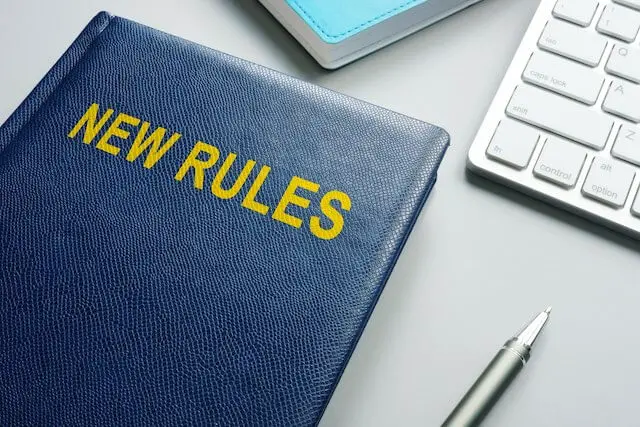The Office of Personnel Management (OPM) published a proposed rule in the Federal Register this week along with a request for comments from the public that would make it easier to fire federal employees for serious misconduct.
Rationale for the Proposed Rule
OPM is issuing this proposed rule to align its regulations with the directives outlined in the Presidential Memorandum issued on March 20, 2025, and to address longstanding gaps in the suitability determination process.
Historically, OPM has been responsible for overseeing the suitability of individuals for federal employment, both at the time of hiring and continuously throughout their service. However, due to legal precedents like the Merit Systems Protection Board’s (MSPB) decision in Scott v. OPM (2011), OPM’s ability to take suitability actions based on post-appointment conduct was limited, creating an inconsistency where it was easier to bar someone from federal employment for past misconduct than to remove a current employee for similar behavior.
This proposed rule aims to rectify this discrepancy by enabling OPM to designate current federal employees as unfit for federal service based on post-appointment conduct, thus ensuring that employees remain suitable for federal service throughout their careers.
Agencies would be allowed to refer misconduct cases to OPM instead of following the conventional disciplinary process. If OPM determines that termination of an employee is necessary, the agency would have five days to initiate the termination process.
The proposed rule also incorporates new suitability criteria as directed by President Trump’s Executive Order issued on February 11, 2025, Implementing the President’s “Department of Government Efficiency” Workforce Optimization Initiative, enhancing the government’s ability to efficiently address misconduct and protect the integrity of the federal workforce.
Additionally, the rule supports the implementation of continuous vetting processes under the “Trusted Workforce 2.0” initiative launched in May 2018, allowing for timely identification and action when an employee’s conduct undermines the efficiency and integrity of federal service.
This initiative was intended to modernize workforce vetting, ensuring that only trusted individuals enter and remain in the federal workforce. One of its main goals is to provide vetting processes that enable each individual’s vetting status to be continuously up to date.
Significant Changes Proposed by OPM’s Rule
Authority to Take Suitability Actions for Post-Appointment Conduct
OPM seeks to formalize its authority to take suitability actions against current federal employees based on conduct that occurs after their appointment. This represents a significant shift from the past, where such authority was ambiguous or limited.
Expansion of Suitability Factors
The rule proposes to incorporate new criteria for evaluating employee suitability, including:
- Failure to comply with legal obligations, such as timely tax filings
- Non-adherence to citizenship requirements
- Misuse or negligent loss of government resources
- Refusal to certify compliance with nondisclosure obligations
- Refusing to furnish testimony as required by 5 CFR 5.4
Enhanced Continuous Vetting
Building on the Trusted Workforce 2.0 initiative, the proposed rule integrates continuous vetting to identify issues with current employees in real time, ensuring ongoing suitability assessments.
Revised Suitability Action Procedures
The rule outlines clearer processes for suitability actions, emphasizing transparency, fairness, and separation of proposing and deciding officials to ensure impartial decisions.
Projected Impact of the Proposed Rule
According to OPM, these are the expected impacts of the proposed rule:
- Impacted Positions: Competitive service, excepted service (convertible to competitive), and career Senior Executive Service
- Impacted Individuals: Applicants, appointees, and employees in impacted positions, as well as contractors and nonappropriated fund employees
- Impact on OPM: Increased number of suitability actions, but neutral impact on MSPB due to anticipated similar appeal rates
Expected Benefits
Regarding the anticipated benefits of the proposed rule, OPM states:
The expected benefits of the proposed rule are to further establish standards and processes by which OPM and agencies efficiently and appropriately vet individuals for risk to the integrity and efficiency of the service. More expeditious removal and debarment of individuals found to negatively impact the integrity or efficiency of the service will reduce risks posed by such individuals as well as costs to agencies, allowing them to spend resources on mission services rather than administrative processes.
Opposition from federal employee unions to the proposed rule came quickly. American Federation of Government Employees National President Everett Kelley said in a statement, “The administration is attempting to take rules originally intended to help agencies root out unqualified job applicants and apply them to current employees so it can bypass due process laws and quickly fire workers it claims are no longer suitable for their jobs. This is yet another example of this administration willfully disobeying existing laws to carry out its ideological agenda.”
Comments can be submitted about the proposed rule until July 3, 2025.



